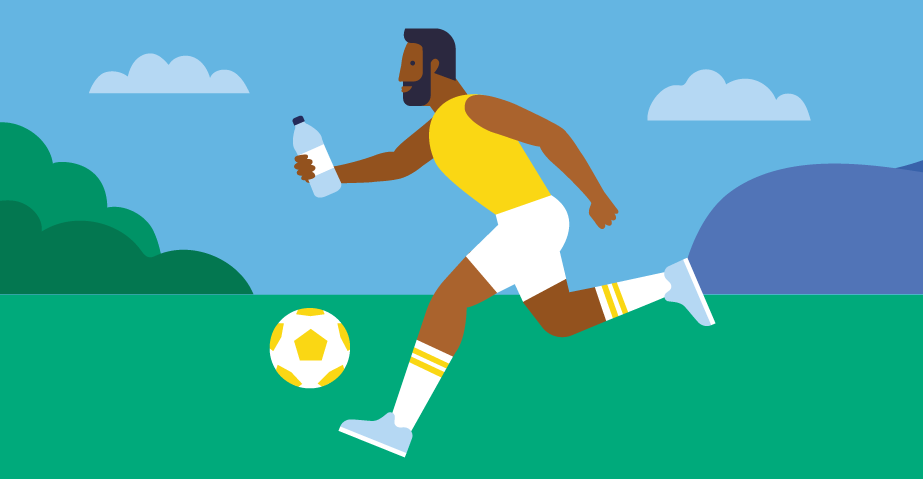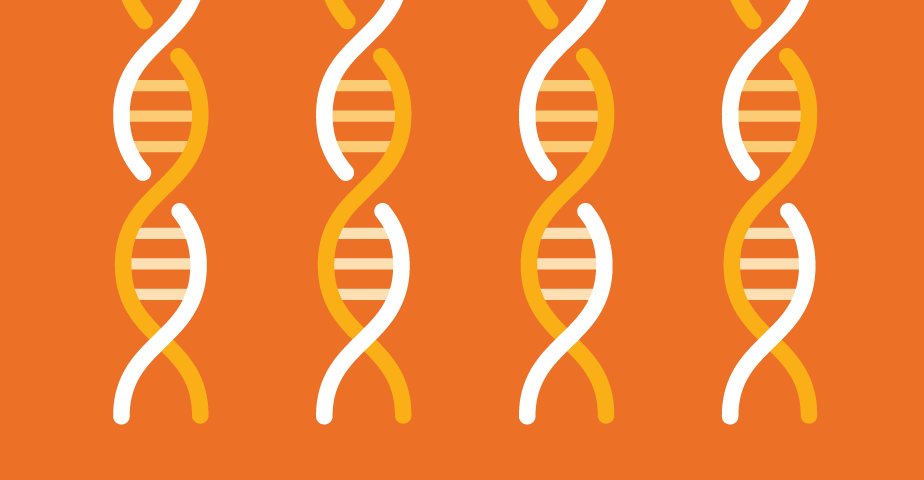Healthy bones for life
Last Updated : 28 October 2014Healthy bones are key for healthy ageing. The foundations of a healthy skeleton are laid down early in life, but our dietary and lifestyle habits throughout life also play an important role determining bone health later in life.
What is bone?
Bone is a composite material, consisting of crystals of mineral (calcium, phosphorus, zinc and magnesium) bound to a protein matrix. This provides strength and resilience so that the skeleton can absorb impact without breaking. Altogether, 99% of the body's calcium is found in bone and teeth. An imbalance in the composition of bone can lead to disorders such as rickets (soft and weakened bones in children due to poor mineralisation often leading to bowed legs), osteomalacia (softening of the bones, in adults, resulting in pain, weakness, fragility) or osteoporosis (bones become porous and brittle, increased risk of fracture).1-3 Therefore, composition is an important determinant of bone health and strength.
Bone tissue throughout life
Bone is a dynamic tissue which undergoes changes throughout life. During childhood and adolescence the size and shape of bones are altered by a process called modelling. Most of the bone mass (~90%) is laid down during the first two decades of life, with peak bone mass being achieved somewhere around 18 to 35 years. Once the bone stops growing, it continues to be remodelled - old bone is removed and replaced by new bone.1-3 The remodelling process repairs damage and prevents accumulation of too much old bone, which can lose its resilience and become brittle.1,2 The extent of peak bone mass acquired during early life has implications for bone health throughout life.2 This makes the first two decades of life crucial for healthy bones.3 Once peak bone mass is achieved, gradual bone loss occurs, at a slow rate that increases with age. In particular menopause is a time when bone-loss accelerates due to hormonal changes.2For an interval of a few years around menopause, women lose 2% of bone annually. Afterward, bone loss slows to about 1% to 1.5% per year.4
Factors influencing bone health
Peak bone mass is influenced by heredity, gender, race, nutrition, hormonal status, exercise, bodyweight and other lifestyle factors including alcohol consumption and smoking. The most important factor is genetic influence, accounting for 70-75% of the difference between people.3,5 However, modifiable factors including nutrition and physical activity play an important role in bone development and reduction of bone loss.
Nutrition and bone health
Two nutrients key for bone health are calcium and vitamin D.
Calcium is the most abundant mineral in bone. During childhood and adolescence, a sufficient supply of calcium is crucial to maximise the amount deposited in the skeleton.5,6 An adequate supply of calcium throughout adulthood is also crucial to reduce bone loss. The European daily nutrient reference value for calcium is 800 mg per day for adults, although national recommendations vary (e.g. 1000 mg in Germany, 800 mg in the United Kingdom).7
Calcium is present in a wide range of foods and the general population is advised to consume regularly foods rich in calcium. Dairy products are plentiful sources of readily absorbed calcium, and 2-3 portions should be included daily. Fish consumed with soft edible bones (such as whitebait, canned sardines or canned salmon) also provide significant amounts of calcium. Pulses, wholegrains, nuts, seeds, dried fruits and some green vegetables (e.g. broccoli, spring greens and kale) contain some calcium, although some of these foods also contain substances that bind to calcium and inhibit its absorption (e.g. phytates in wholegrains and pulses, oxalate in spinach and rhubarb).6 Those with an established bone issue (e.g. low bone density) are often advised by their physician to consume calcium supplements (usually in combination with vitamin D).
Vitamin D is also critical for bone development and health, as it is required for calcium absorption and bone formation.3,5 Vitamin D deficiency can lead to rickets in early life, and osteomalacia in children and adults. Low vitamin D status is also associated with the development of osteoporosis and an increased risk of falls in elderly.2
The main source of vitamin D is from exposure of skin to sunlight; around 10-15 minutes of sun exposure on hands, arms and face is sufficient. However, the amount of vitamin D produced through sun exposure depends on many factors, such as time of the day and year, latitude and the colour of the skin. If vitamin D production in the skin is insufficient, we need to rely on dietary sources. The European nutrient reference value for adults is 5 µg vitamin D per day, but an individual’s dietary requirements will vary depending on the various factors influencing vitamin D production.7
Only a few dietary sources are high in vitamin D, in particular oily fish, eggs, liver and fortified foods.8 In many countries, vitamin D supplementation is recommended for vulnerable population groups such as toddlers, elderly, people with dark skin, in particular those living at higher latitudes, or people who cover up their skin. Between 2 and 30% of the European population are estimated to be vitamin D deficient (serum 25-hydroxyvitamin D <25 nmol/L), and it may be as high as 80% of institutionalised elderly.9
Protein is also a major component of bone and dietary protein is crucial for bone development and health, as confirmed by the acceptance of a health claim relating to protein and bone development and maintenance by the European Commission (see Table 1). Traditionally it has been thought that too much protein in the diet may be harmful to bone health, because of increased calcium excretion through the urine. However, more recent evidence suggests in fact, the increase in calcium excretion may be a result of protein increasing calcium absorption from the diet.10,11 Protein seems beneficial for calcium absorption and bone health, especially in the elderly.10 Although protein supply in Europe is generally adequate and there is no benefit of increasing consumption above recommended levels, inadequate intakes are found in some population groups such as elderly people.2
Several other vitamins and minerals are linked to bone health (see Table 1 for permitted health claims linked to bone health), but are generally not considered major limiting nutrients for bone health. Including plenty of fruit and vegetables in the diet also seems to have beneficial effects on bone health.2
Table 1. Permitted health claims in the European Union relating to bone health and development.12
|
Health claim |
Nutrients associated with claim |
|
Needed for normal growth and development of bone in children |
|
|
Needed for/contributes to the maintenance of normal bones |
|
Physical activity and bone health
Physical activity is crucial for bone development and maintenance because bone adapts to the level of mechanical loading, i.e. bone grows with increased loading.2,6 It is an important modulator of bone mass throughout life, from childhood to late adulthood. Studies show that exercise interventions in children can increase bone density and mass by 1-5%, and also increases bone area, width and circumference, all contributing to greater bone strength.3 On the other hand, mechanical unloading of bone, for example in space or during immobilisation (e.g. bed rest, cast on limb), leads to significant loss of bone mass. Complete immobilisation, for example in bedridden people, may result in a loss of some 40% of bone mass.1 Adequate amounts of physical activity not only directly affect bone health, but is also important for maintaining muscle mass and therefore can reduce risk of falls in older age, and consequently the risk of fracture.2
The bone-forming effects of exercise are specific to the anatomical sites (parts of the body) at which the mechanical load occurs. For example, tennis players have greater bone density in the dominant than in the non-dominant arm.1 Therefore, activities that put force on bones are particularly beneficial, including hopping, running, jumping and skipping, as well as weight training.2,3,6 Activities that put less mechanical load on bones such as swimming or riding a bike, although good for muscles and cardiovascular health, have less effect on bone density and mass.
The World Health Organization recommends 60 minutes of moderate physical activity daily for children 5-17 years, including vigorous activities that strengthen muscle and bone (e.g. running, jumping, climbing trees, pulling and pushing activities) at least 3 times a week, and 150 minutes per week for adults and elderly including muscle-strengthening activities twice a week.13
References
- Pettifor JM, et al. (2011). The Skeletal System (pp. 272-311). In:Lanham-New S et al. (ed.) Nutrition and Metabolism. 2nd edition. Oxford, UK: Nutrition Society.
- British Nutrition Foundation (2009). Healthy Ageing: The role of nutrition and lifestyle. Oxford, UK: Wiley Blackwell.
- Lanham-New SA, et al. (2007). Importance of vitamin D, calcium and exercise to bone health with specific references to children and adolescents. Nutrition Bulletin 32(4):364-377.
- North American Menopause Society (2010). Management of osteoporosis in postmenopausal women: 2010 position statement of The North American Menopause Society. Menopause: The Journal of The North American Menopause Society 17(1):25-54.
- Prentice A (2013). Standing on the shoulders of giants: Understanding calcium and vitamin D requirements. Nutrition Bulletin 38:323-331.
- Weichselbaum E & Buttriss J (2014). Diet, nutrition and schoolchildren: An update. Nutrition Bulletin 39(1):9-73.
- Regulation (EU) No 1169/2011 of the European Parliament and of the Council of 25 October 2011 on the provision of food information to consumers.
- International Osteoporosis Foundation, Vitamin D section
- Lips P (2007). Vitamin D status and nutrition in Europe and Asia. Journal of Steroid Biochemistry and Molecular Biology 103:620-625.
- Cao JJ & Nielsen FH (2010). Acid diet (high-meat protein) effects on calcium metabolism and bone health. Current Opinion in Clinical Nutrition and Metabolic Care 13:698-702.
- Jesudason D & Clifton P (2011). The interaction between dietary protein and bone health. Journal of Bone and Mineral Metabolism 29:1-14.
- European Commission, EU Register of nutrition and health claims made on foods
- World Health Organization (2010). Global recommendations on physical activity for health. Geneva, Switzerland.



